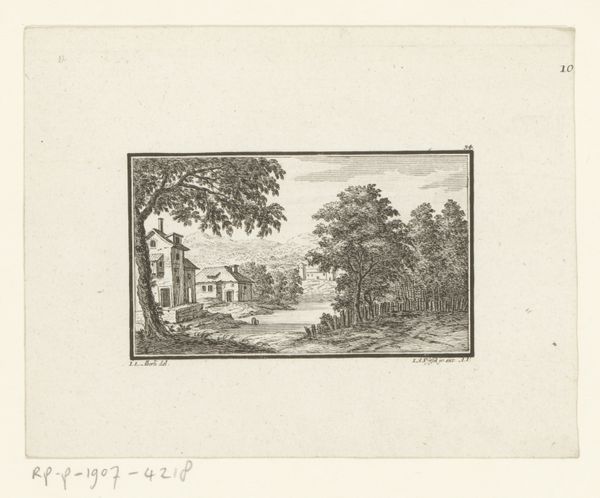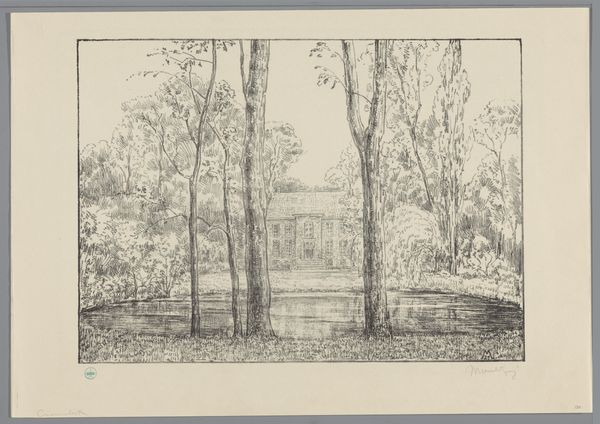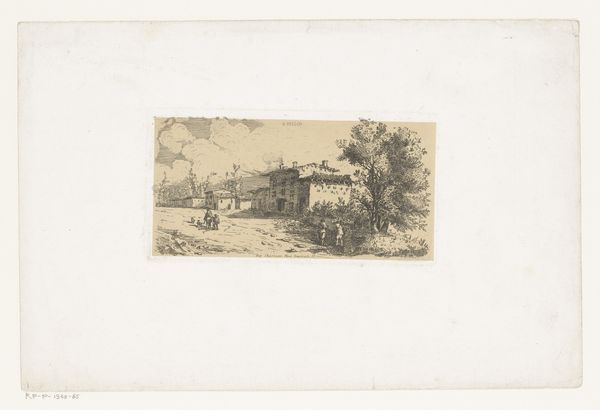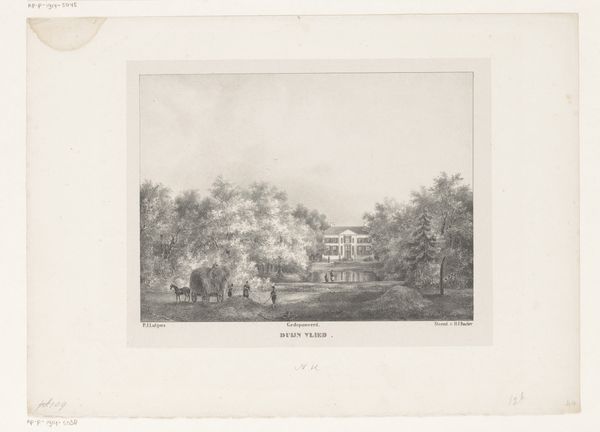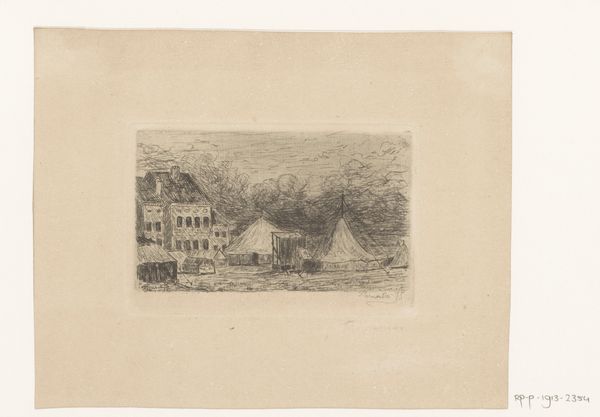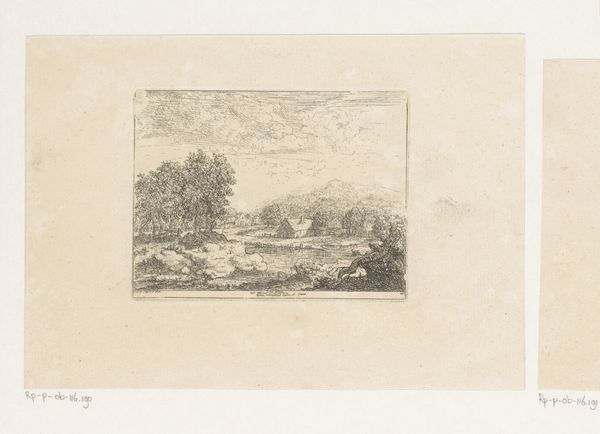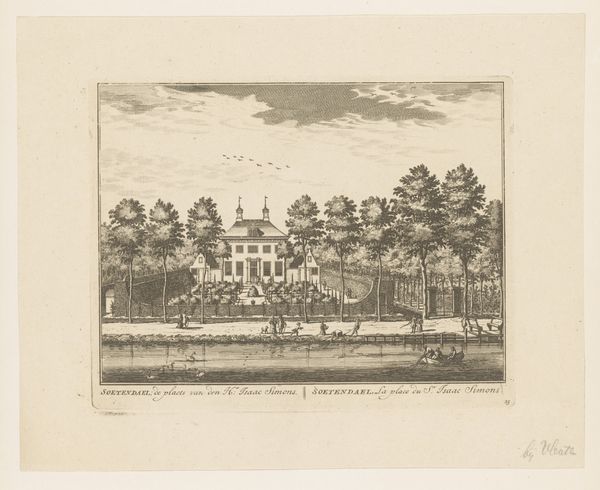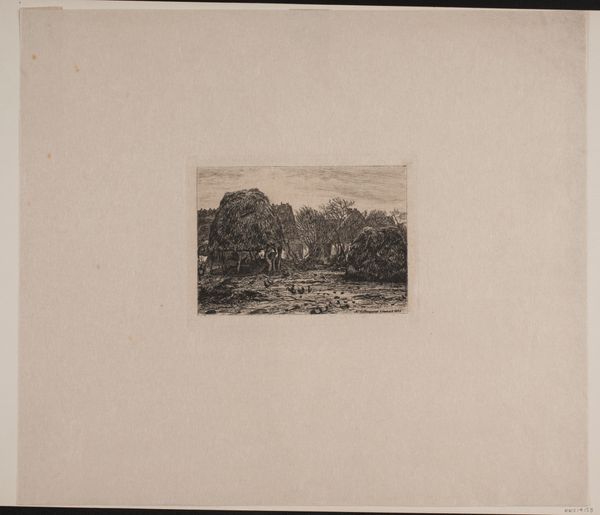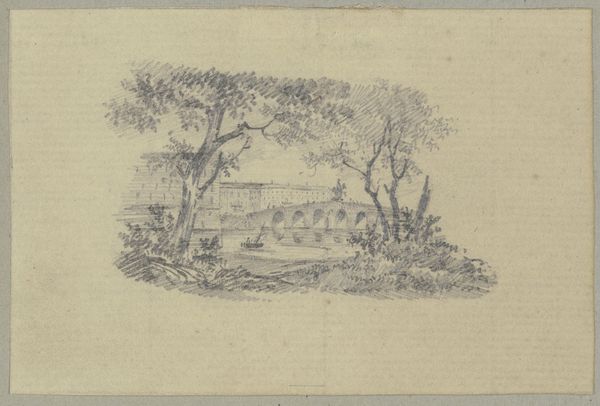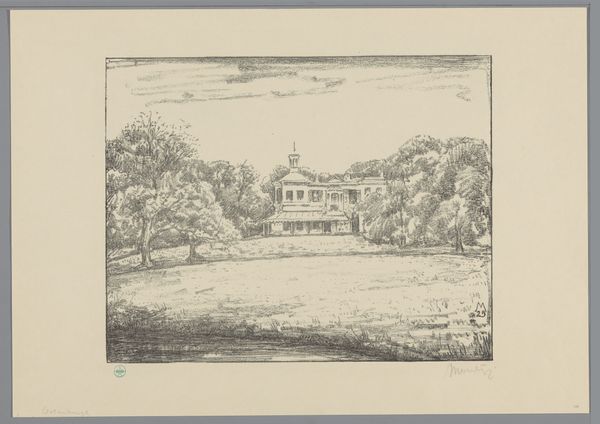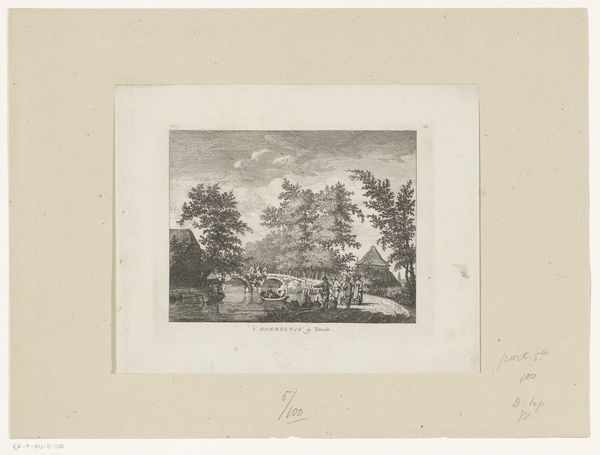
print, etching
#
neoclacissism
# print
#
etching
#
landscape
#
england
#
northern-renaissance
Dimensions: 1 3/8 × 3 5/16 in. (3.49 × 8.41 cm) (image)3 3/16 × 5 9/16 in. (8.1 × 14.13 cm) (sheet)
Copyright: Public Domain
Curator: Welcome. We are looking at "Blair Adam," an etching by John Clerk of Eldin, created between 1770 and 1782. It depicts a landscape, and it is part of the Minneapolis Institute of Art's collection. Editor: My first impression is one of quiet formality. The landscape seems meticulously arranged, and the etching gives it a delicate, almost ethereal quality, wouldn’t you agree? Curator: Indeed. Clerk of Eldin was greatly interested in depicting Scottish estates with neoclassicist design principles and, more broadly, the estate in the period took center stage as a sight of display for social performance. We also can't ignore his technical ability, as his approach reflects the detailed landscape etchings becoming increasingly common in England at the time. Editor: Thinking about the estate as a space of “social performance” is interesting. How much of this image is idealization versus reality? The figures seem strategically placed, almost like actors on a stage. It definitely presents a specific, elevated vision of country life. Are there indications of labor here, or just leisure? Curator: The portrayal definitely leans towards idealization, mirroring the picturesque movement's interest in aestheticizing the landscape and aristocratic ownership. You are spot on that it’s largely devoid of overt labor—the focus is more on the visual harmony and the estate as a curated vista. One thing that often gets lost in art historical accounts of pieces like this is that those landscapes didn't happen by themselves, so where is that element in this picture, how has it been cropped out? Editor: Precisely. Where's the acknowledgement of the power dynamics inherent in that ownership? Perhaps the very absence is a statement itself. That the peace and visual harmony is an achievement. How did museums at the time take that up and exhibit the art? It seems to be more complex than one may at first perceive. Curator: Initially, depictions like these played a significant role in establishing a cultural and visual record of British identity and land ownership. Museums played a key part in displaying this national pride to foster it. Over time, with our evolving social consciousness, museums hopefully prompt this type of critical dialogue you just articulated around the legacies of land ownership and labor. Editor: Thank you for guiding me to look closer at this work, now I notice all the layers present! Curator: It's been enlightening, highlighting the interplay between aesthetic presentation and deeper socio-political context embedded within such landscapes.
Comments
No comments
Be the first to comment and join the conversation on the ultimate creative platform.
